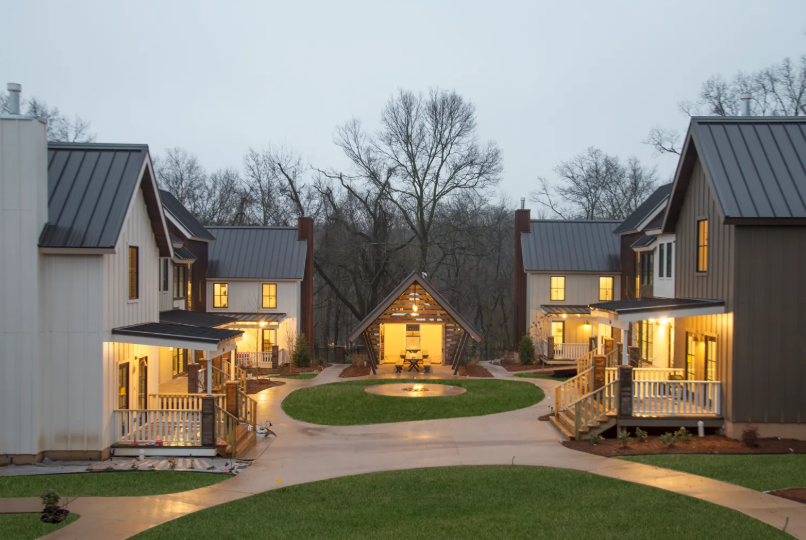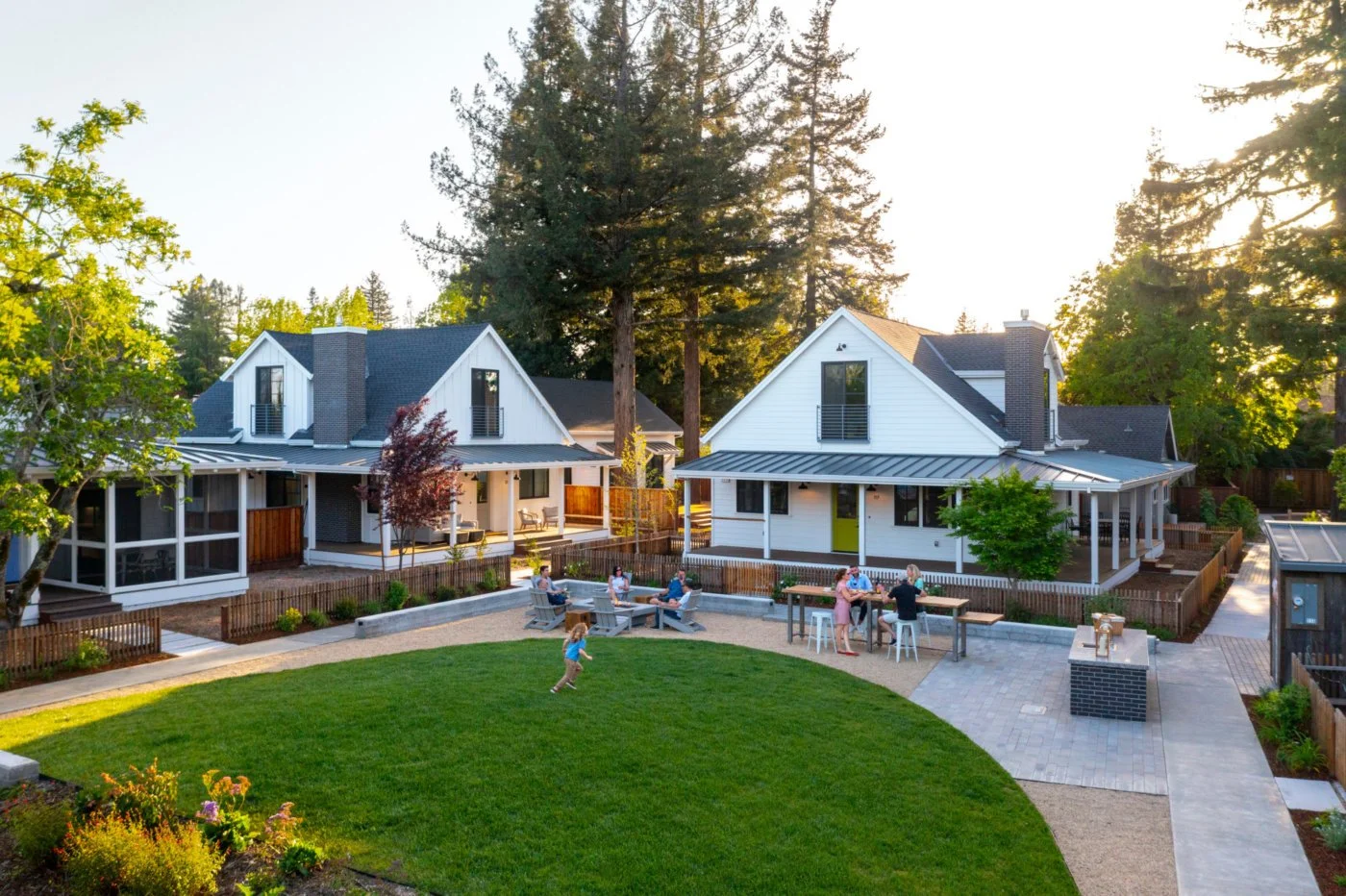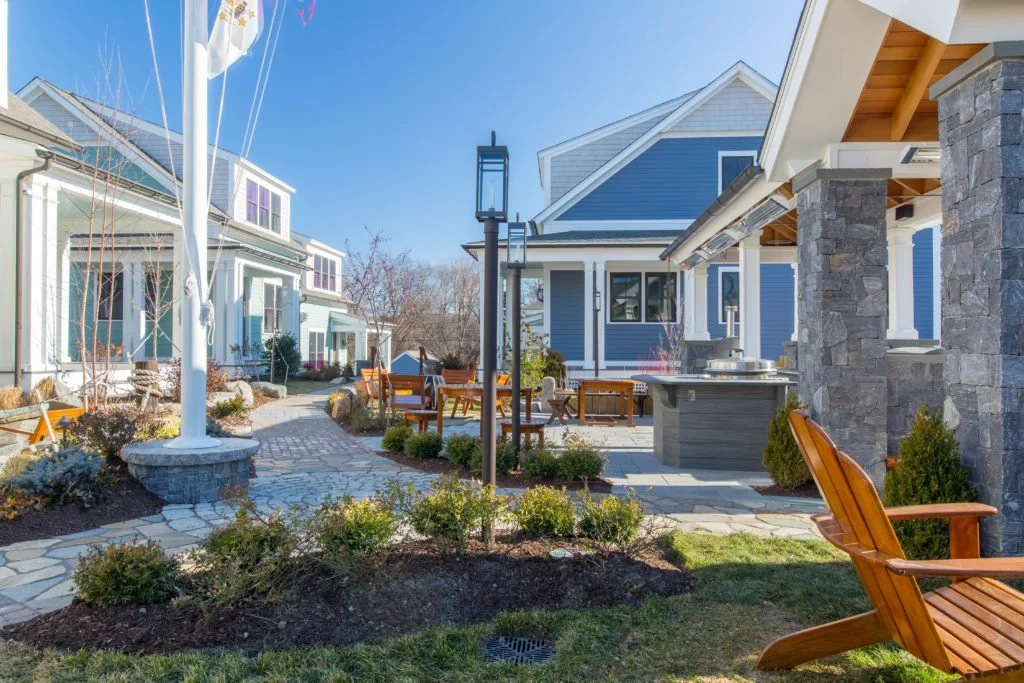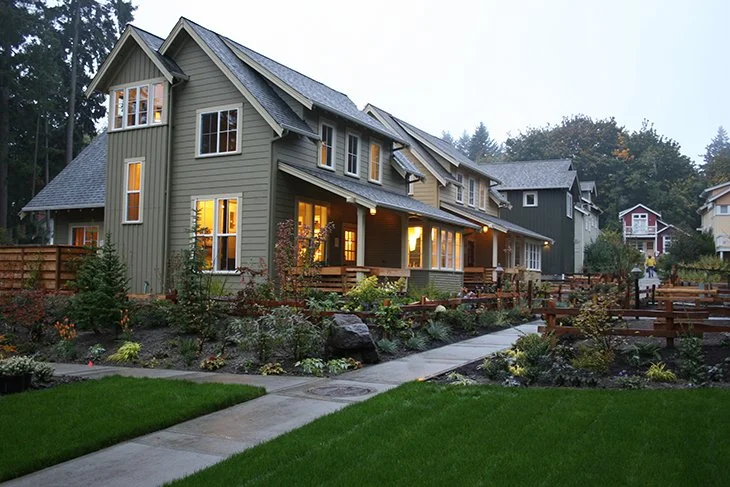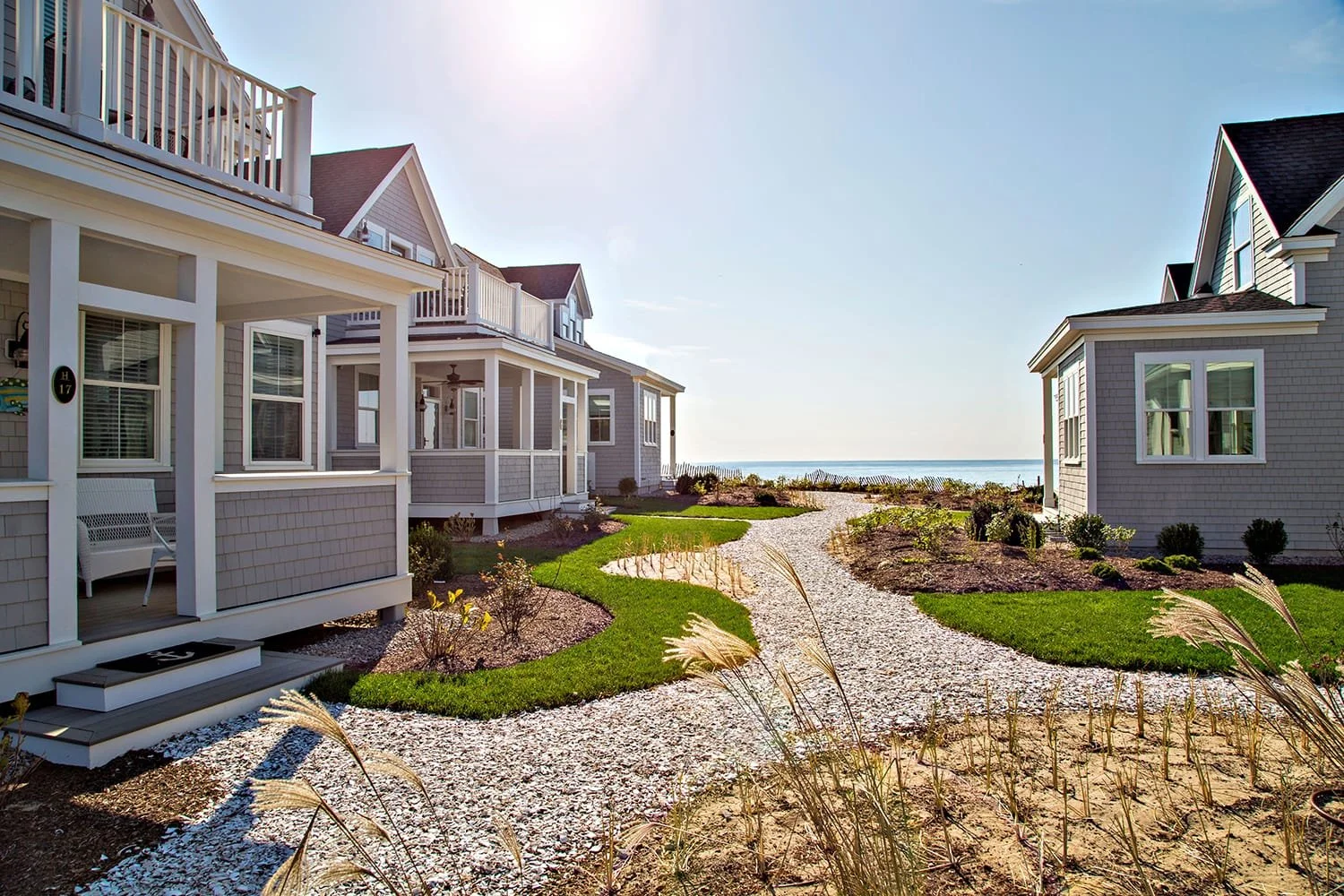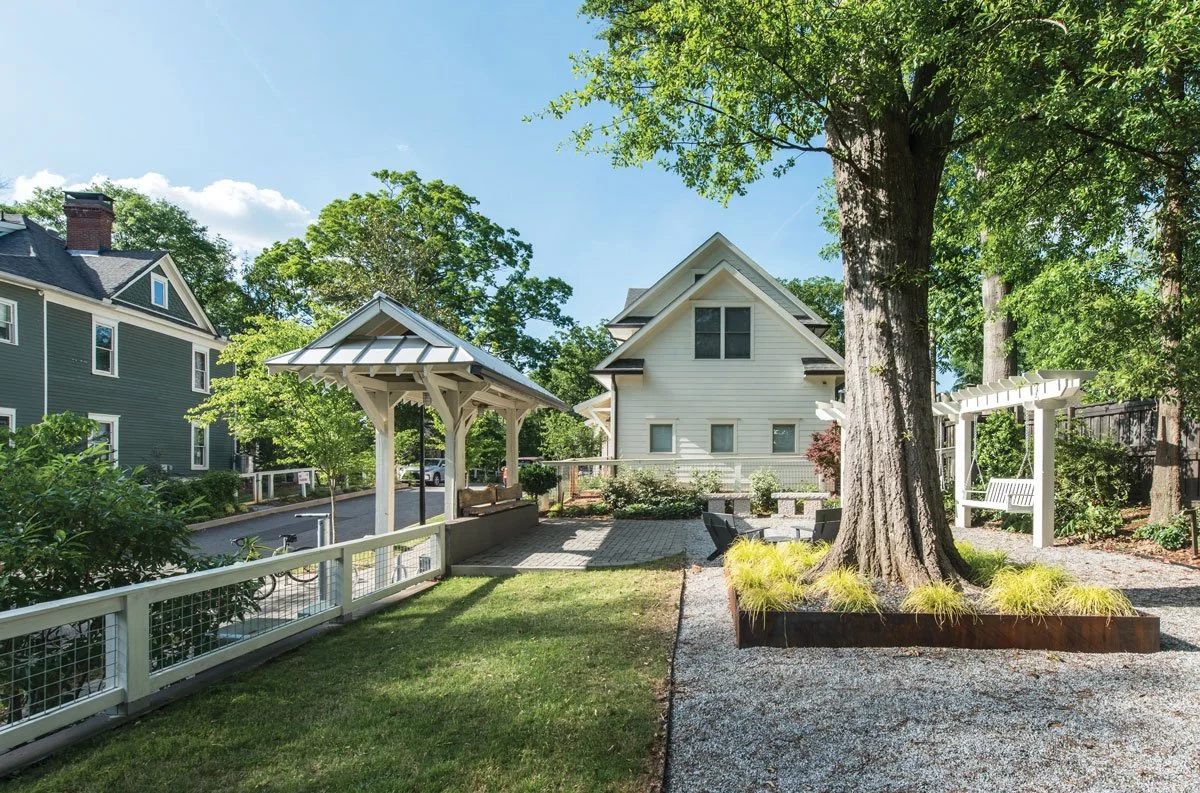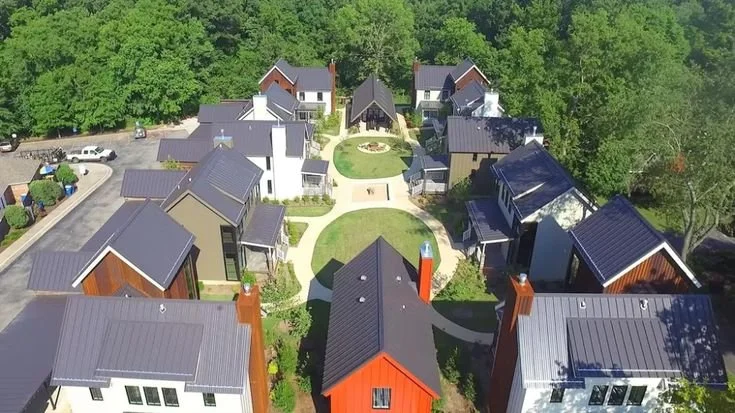What exactly is a pocket neighborhood?
Black Apple, Bentonville, AR
A pocket neighborhood is a small scale development that is designed to encourage interaction among residents. It has diverse appeal, ranging from seniors looking for a supportive community, families, and individuals seeking more social connection than what a traditional neighborhood provides.
Typically less than twenty homes are designed to face inward, looking over a shared community gathering green and often share a common house for the residents. While residents enjoy this shared amenity, which encourages opportunity for social interaction among neighbors, there are also varying depths of privacy and ensuring each home offers a private living space.
Parking is often decentralized and deemphasized within the neighborhood, and kept far away from the common green for the safety and serenity of the shared green.
Riverhouse, Healdsburg, CA
Riverhouse, Healdsburg, CA
Castle St. Cottages, Greenwich, RI
Conover Commons, Redmond, WA
Heritage Sands, Dennis Port, MA
A Brief History
Pocket Neighborhoods rose to prominence in the mid to late 1990s through the pioneering work of architect Ross Chapin and developer Jim Soules, during the early wave of the green housing and new urbanist movements. Their shared vision was to design small-scale communities that fostered meaningful connection among residents through the careful integration of shared green spaces, pedestrian pathways, and human-scaled architecture.
Drawing inspiration from earlier models such as bungalow courts of the 1920s and 1930s and cottage clusters common in pre-war neighborhoods, Chapin and Soules reinterpreted these traditional layouts for a modern context. Their approach also drew from influential urban design precedents such as the Radburn Plan, which introduced the idea of separating pedestrian and vehicular circulation, and Bernard Maybeck’s Rose Walk in Berkeley, California, which gracefully integrated homes into a hillside setting while prioritizing pedestrian movement and community connection.
In 1995, the first formally recognized pocket neighborhood, Third Street Cottages, was completed in Langley, Washington. This project demonstrated that compact, design-forward housing could provide a high quality of life within a smaller environmental footprint while nurturing a sense of belonging often missing in conventional subdivisions.
Over time, pocket neighborhoods became emblematic of a human-centered alternative to large-scale, car-dependent suburban development. Their emphasis on intentional design, shared space, and social connection continues to influence architects, planners, and developers seeking to build more resilient, connected, and sustainable communities across the country today.
Danielson Grove, Seattle, WA
Black Apple, Bentonville, AR
La France Walk, Atlanta, GA
Danielson Grove, Seattle, WA
In case you’re wondering…
-
Traditional subdivisions often prioritize cars, garages, and lot size. Pocket Neighborhoods prioritize people, shared spaces, and thoughtful design. Homes are oriented toward a common green rather than the street, creating a more connected and pedestrian-friendly environment.
-
Residents enjoy a stronger sense of community, beautifully designed shared outdoor spaces, reduced maintenance obligations, and walkable layouts that promote safety and interaction. These neighborhoods often attract those who value quality design, sustainability, and a more intentional way of living.
-
Not necessarily. While the quality of design and shared amenities can increase value, pocket neighborhoods often use land and infrastructure more efficiently, reducing long-term costs. The smaller homes and shared green spaces can also translate into lower maintenance and utility expenses.
-
Pocket neighborhoods appeal to a diverse range of people, from young professionals, families, to downsizing empty nesters who value design, community, and connection over size and seclusion. They’re ideal for those seeking meaningful neighborhood relationships within a smaller, more curated setting.
-
Like a traditional neighborhood subdivision, the common open space is owned and maintained by the home owners association. This shared stewardship helps to keep the community’s character and design integrity intact.
